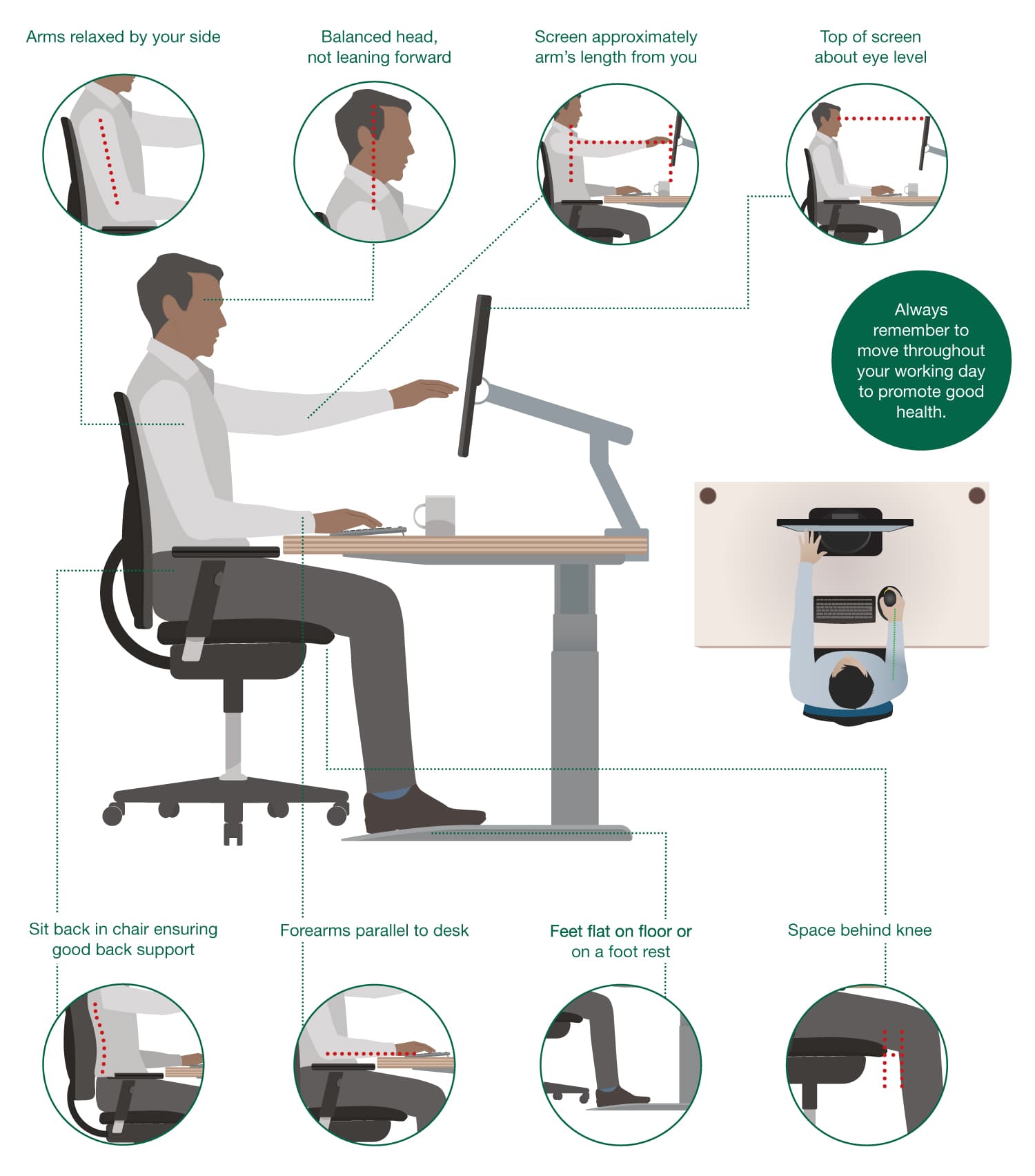Hybrid working from home guide

You’re a hybrid worker if you have the flexibility to switch between working from home and the office. While hybrid working has many great benefits, alternating between different environments introduces new health and wellbeing challenges. If you want to make the most of hybrid working from home without compromising your health, comfort, or productivity, then this guide is for you.
What are the benefits of hybrid working from home?
Hybrid working from home is a big step away from the old 9-5 office model. It rejects the idea that a productive worker is one who remains seated at their desk all day. It rejects the idea that employees should turn up at the same time every day and work at a designated desk for a set number of hours. Hybrid working from home offers greater freedom, autonomy and trust.
Hybrid working from home benefits include:
1. Better work-life balance
Being at home more gives you an opportunity to better manage your home commitments. Time getting to and from the office can now be spent exercising, cleaning, running errands, and doing all the other things we usually have to squeeze into our weekends.
2. Less commuting
As well as saving you time, reduced commuting means less travel-related stress, fewer emissions, reduced traffic on the roads, and less money spent on fuel.
3. Change of scenery
Some people like the familiarity and comfort of going to the same place every day. Some people don’t. Hybrid working affords people the choice to do what suits them. For those who are stimulated by change and movement, hybrid working from home and the office is the perfect option.
4. Make your own decisions
Having the option to decide your own work patterns can feel liberating. Many people prefer to work for a company that trusts them to make good choices about how and where they work.
What are the risks of hybrid working from home?
Hybrid working from home means switching regularly between different environments. This makes it harder for your health and safety team to optimise your work environment and protect you from the risks involved with poor set-up. The good news is, there’s plenty you can do to overcome these challenges.
Hybrid working from home risks include:
1. Poor posture, set-up, equipment and lighting
Offices are, ideally, specifically geared up to support people using computers all day. Our homes tend not to be. When hybrid working from home, you may find yourself setting up in unorthodox places like the sofa, or your dining room table. Not having a dedicated workstation can contribute to aches, pains and injury over time.
2. Increased inactivity
The physical act of going to work is just that: physical. It involves moving our bodies to get around during the day, which all contributes to our daily activity levels and helps strengthen our heart and muscles. At home the commute from bed to desk tends to be a lot shorter, depriving us of passive activity, and potentially leading to musculoskeletal issues, lower mental health, weight gain and the long-term health issues linked to that.
3. Distractions from family and pets
Being at home means being in the place you usually relax and enjoy yourself. It can also mean being in close proximity to housemates, family, or pets — which can take your focus away from work. This is why it’s really important to set firm boundaries and, if possible, create a dedicated work area in the home where you can have privacy.
4. Blurred boundaries - not knowing when to switch off
Hybrid working from home means that home no longer represents your safe haven. It’s too easy to get home from an office day and open your laptop to finish off that task. One task escalates and before you know it, you’ve spent your whole evening working. To limit the impact of hybrid working from home on your work-life-balance, be strict with yourself and lay down rules.
Overcoming hybrid working from home challenges
How to set up suitably while hybrid working from home
To avoid back pain, RSI, carpal tunnel and all the other musculoskeletal issues associated with spending too long in poor, sedentary postures, it’s essential to understand what a good working posture looks like.

How to choose the best hybrid working from home ergonomic products
Ergonomic chair
The ideal ergonomic chair will have plenty of adjustment features. Many of the ergonomic chairs or home office chairs we supply feature movement mechanisms, which allow you to move back and forth without losing contact with the chair — great for staying supported and keeping active at the same time.
Laptop stand or monitor arms
If you’re using a laptop while hybrid working from home, you’ll either need to use an adjustable stand or connect it to a larger screen, using adjustable monitor arms to elevate your screen to eye level. Why can laptop use be risky? Because the screen is likely to be too low, causing your head to hang forwards. Your head is a heavy load for your spine when it’s off centre, which can cause neck and back pain.
Ergonomic mouse
If you’re using a laptop stand, it’s essential to connect a mouse separately. If you experience discomfort when using a regular mouse, try an alternative like a vertical mouse, or roll-bar, which reduces gripping and reaching.
Keyboard to suit your role
A full size keyboard increases the distance between you and your mouse. If you use your number pad infrequently, try a compact keyboard with a detachable number pad. Think about how you type. Do you press down hard on the keys? You may want to try a keyboard with shallow, laptop-style keys. Prefer tactile feedback? Try a mechanical keyboard. The best hybrid working from home set-about is all about what’s right for you.
Healthy habits to pick up while hybrid working from home
- Get up and move at least every 30 minutes
- Use a sit-stand desk
- Check your arms, head and legs are positioned comfortably
- Know when to switch off
- Set boundaries with people you share space with
- Keep in contact with your work team
- Use lightweight equipment that’s easy to carry
- Carve out a dedicated space where you feel comfortable

Try these...
What next?
Now that you're better equipped to handle the balance between home and office life, you may benefit from exploring our other guides, all created to increase your health, happiness and productivity while working from home.





